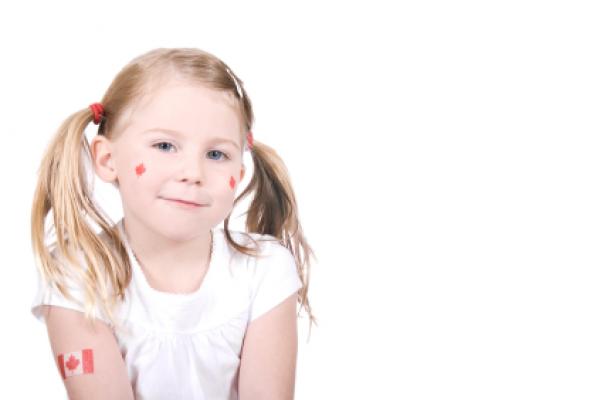Canada Day in Canada
Happy Canada Day from the UK.
On
July 1, 1867, Canada became a self-governing dominion of Great Britain
and a federation of four provinces: Nova Scotia; New Brunswick; Ontario;
and Quebec. The anniversary of this date was called Dominion Day until
1982. Since 1983, July 1 has been officially known as Canada Day.

Canadians of all ages can be proud of their heritage on Canada Day, an event widely celebrated throughout the country.
Illustration based on artwork from ©iStockphoto.com/Carrie Bottomley
What do people do?
In many towns and cities, municipal governments organise a range of events, often outdoors. These include pancake breakfasts, parades, concerts, carnivals, festivals, firework displays and citizenship ceremonies for new Canadian citizens. The celebrations often have a patriotic mood. Canada's national flag is widely displayed and a lot of people paint their faces red and white, which are Canada's national colours. The celebrations in Ottawa, which is Canada’s capital city, are particularly exuberant.In the province of Quebec, many home leases start on July 1 and last for exactly one year. Hence, many people in Quebec spend Canada Day moving their possessions from one house to another. In this province, Canada Day is also known as Moving Day.
In the province of Newfoundland and Labrador, July 1 is also Memorial Day. This commemorates the heavy loss of life in the Newfoundland Regiment on the first day of the Battle of the Somme during World War I. In Newfoundland and Labrador, the morning of July 1 is usually somber. Flags are flown at half-mast and memorial services are held at cenotaphs (war memorials). In the afternoon, Canada Day celebrations in the province are similar to those in the rest of the country.
Public life
July 1 is a statutory holiday in Canada unless it falls on a Sunday; then it moves to July 2. All provincial governments observe this day. Many organisations, businesses and stores are closed, although some book stores, pharmacies and gas stations may be open. Post offices are closed. As Canada Day falls in the Canadian summer holiday period, all schools are closed.Public transport services may operate to their usual or a reduced timetable. In some areas, extra services are provided for large scale events. Street closures due to concerts, parades and festivals may cause some local disruption to traffic.
Background
On July 1, 1867, the British North Americas Act created the Dominion of Canada as a federation of four provinces. This event is known as the confederation of Canada. The four original provinces were created from the former British colonies of Nova Scotia, New Brunswick and the Province of Canada, which was divided into the provinces of Quebec and Ontario. Canada's boundaries have been extended since 1867. The country now consists of 10 provinces and three territories.On June 20, 1868, the Canada's Governor General proclaimed that Canadians should celebrate the anniversary of the confederation. July 1 became a statutory holiday, known as Dominion Day, in 1879. However, no official celebrations were held until the 50th anniversary in 1917 and the 60th anniversary in 1927. After World War II, Dominion Day was celebrated more frequently and more events were organised by the national government. After the centenary of the confederation in 1967, Dominion Day events became more widespread. July 1 became popularly known as Canada Day. The date was also officially known as Canada Day from 1983 onwards.
Since 2006 Canada Day celebrations were also held at London's Trafalgar Square in the United Kingdom. It is expected that these celebrations will be held annually. Depending on the availability of Trafalgar Square, these events may be held just before, on or just after July 1.
Symbols
Canada's national flag is seen on Canada Day. This consists of two vertical red rectangles separated by a white square. The white square contains a red image of a maple leaf. Canada’s national colours are red and white and are used in many ways on Canada Day. Some people wear red and white clothing and others paint their faces in these colours.
Eat drink and be merry but most importantly keep your pets safe from fireworks and food stuffs they shouldn't eat.
Happy Canada Day from Sheba, Cody and Coco.

